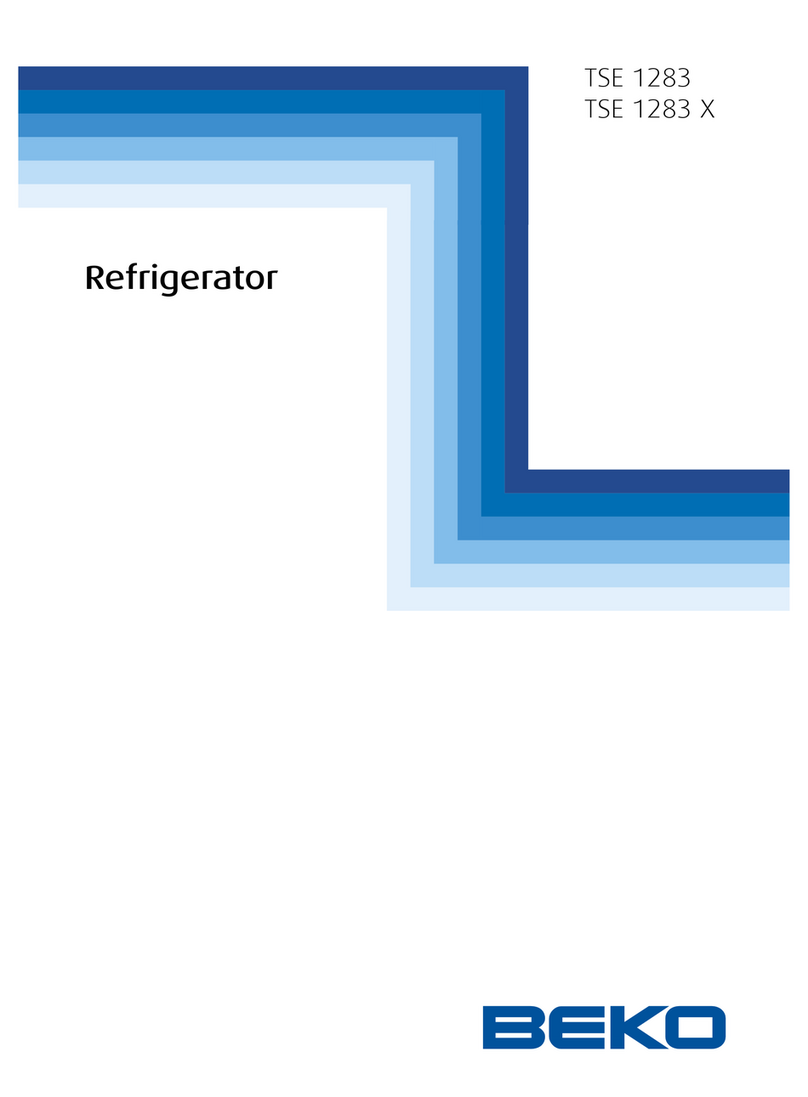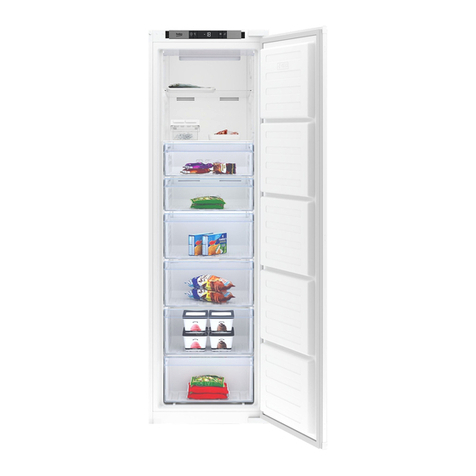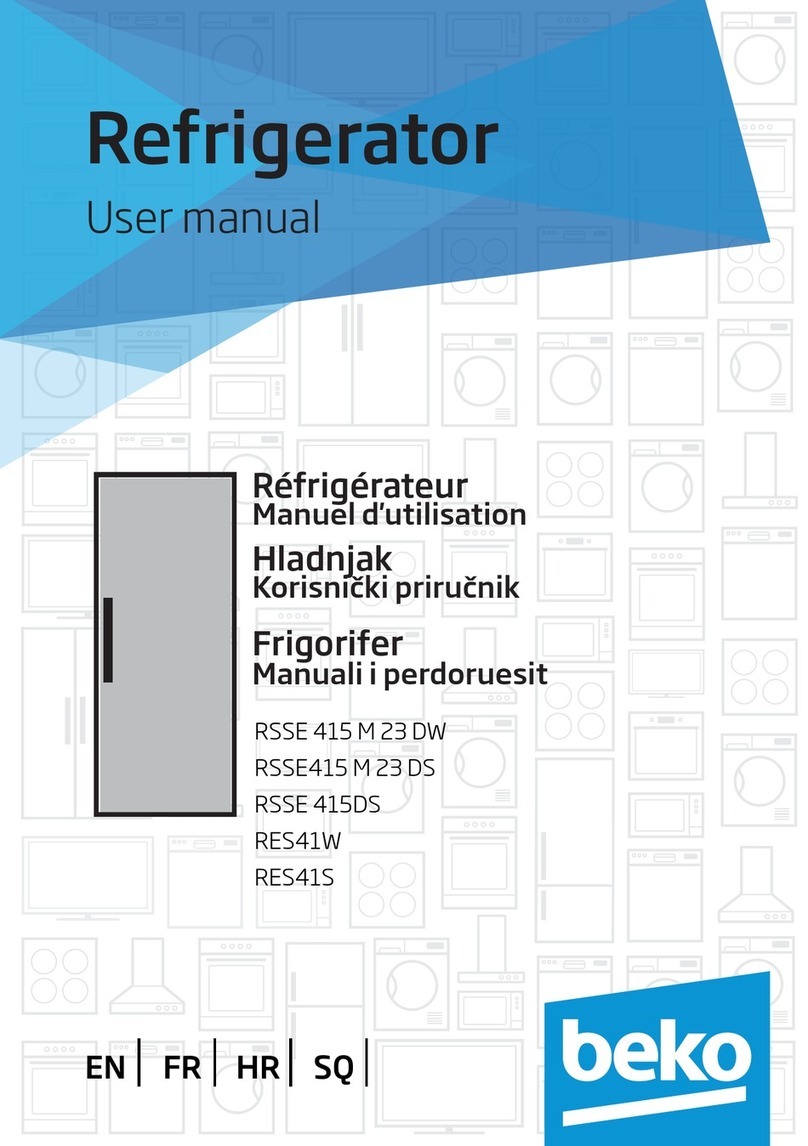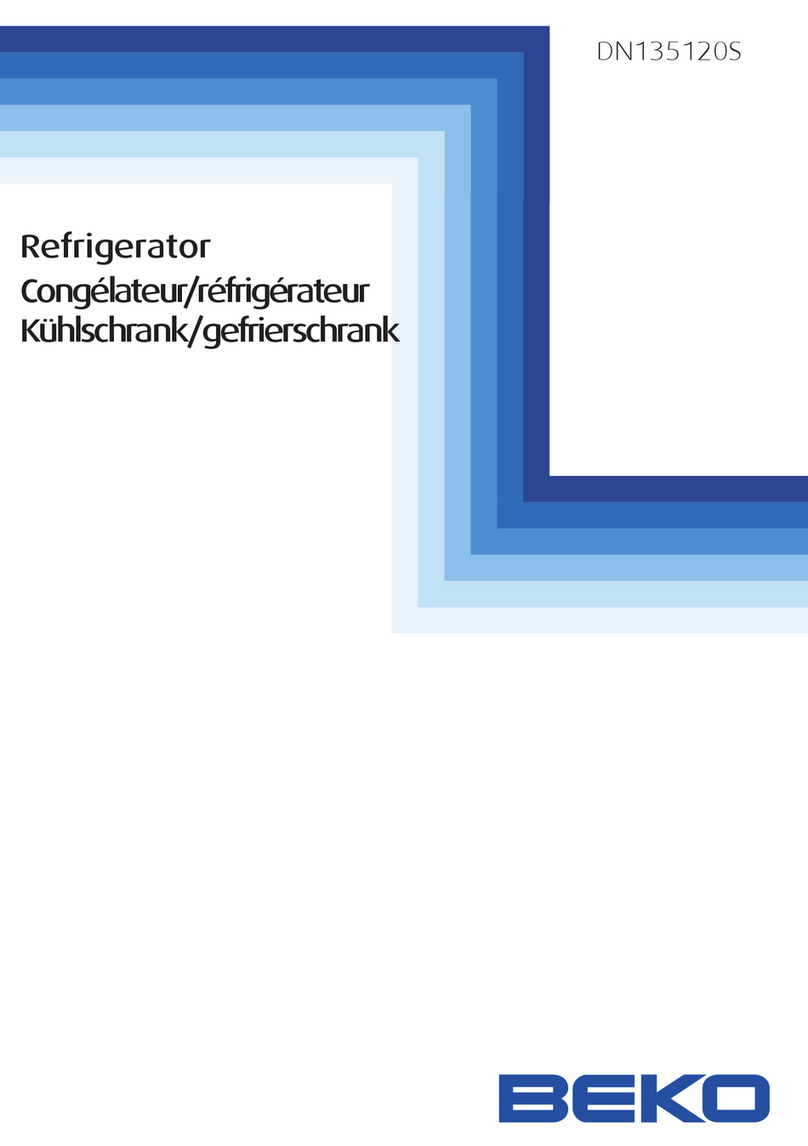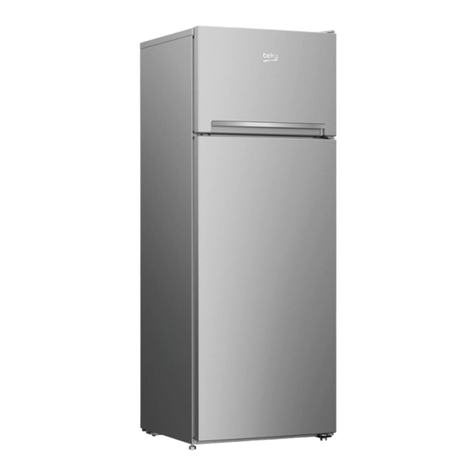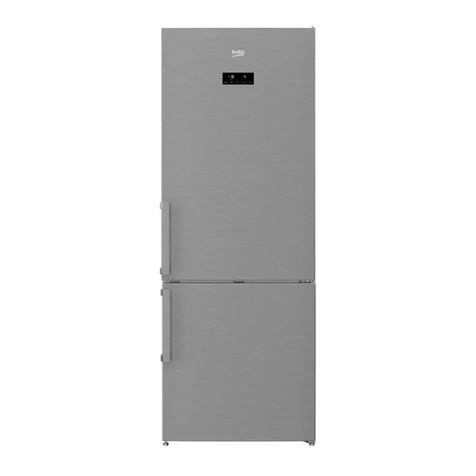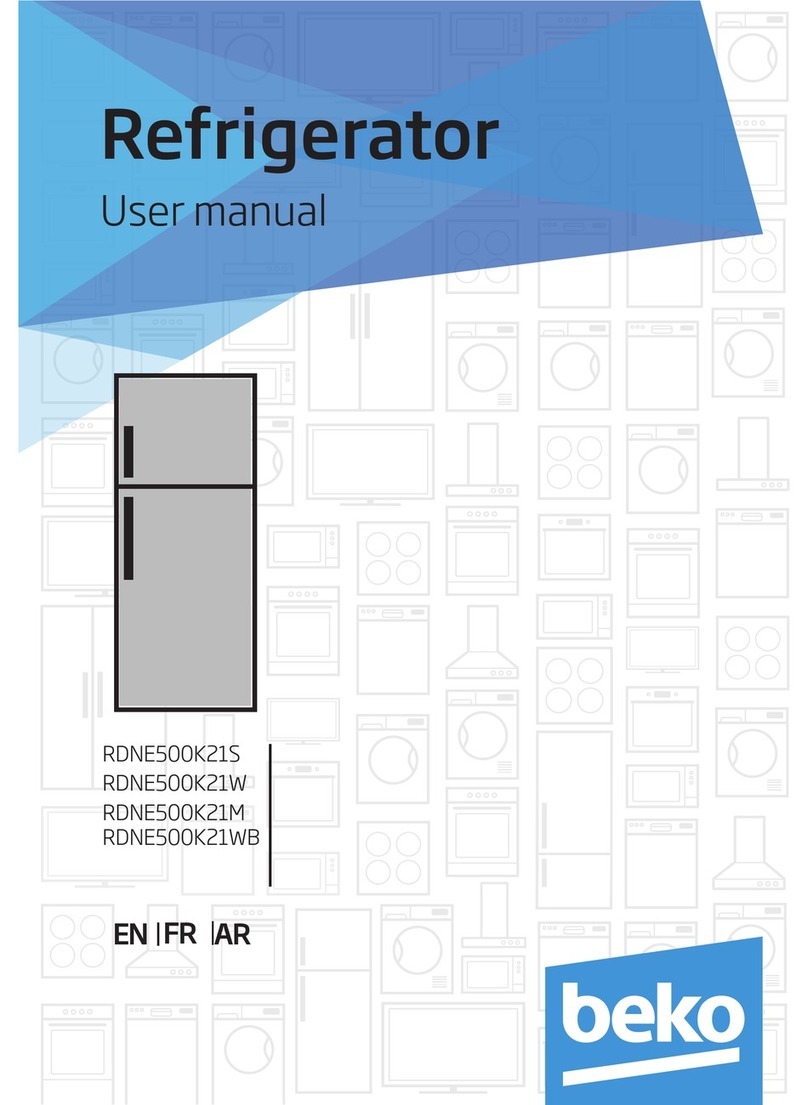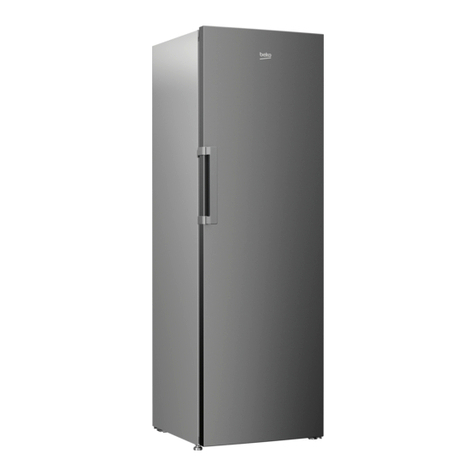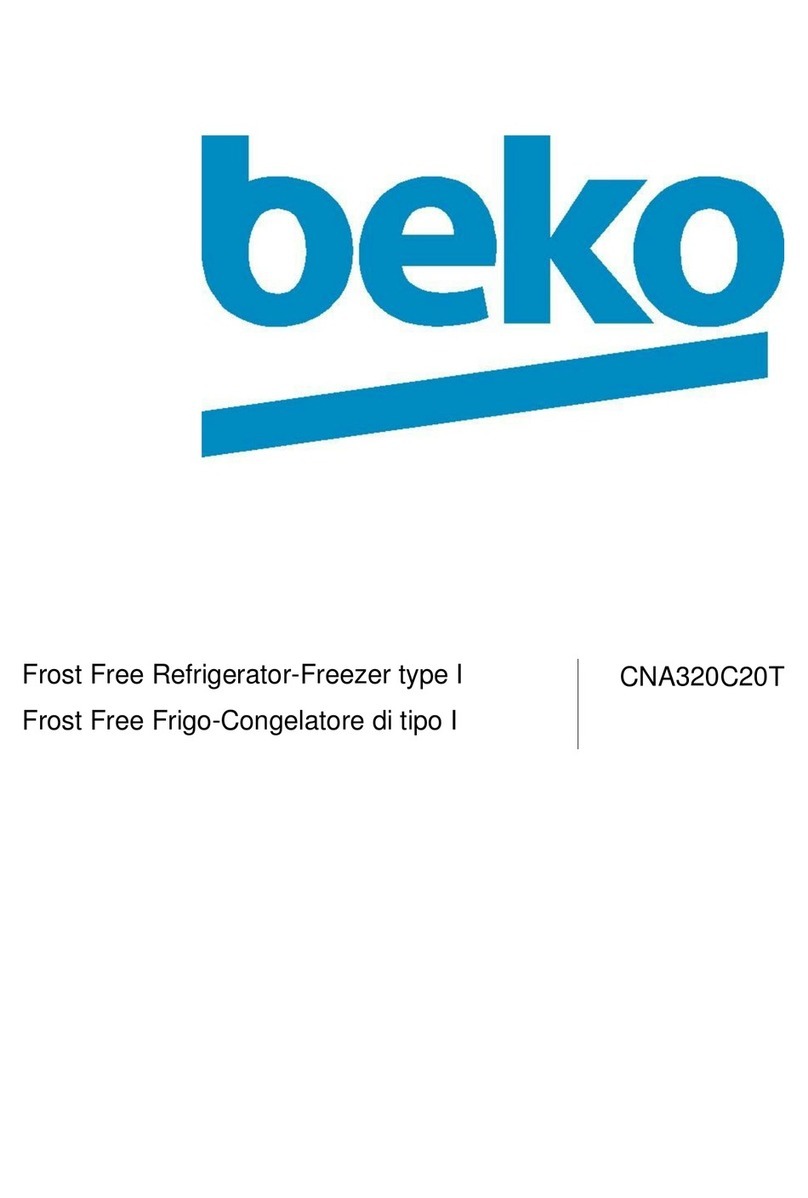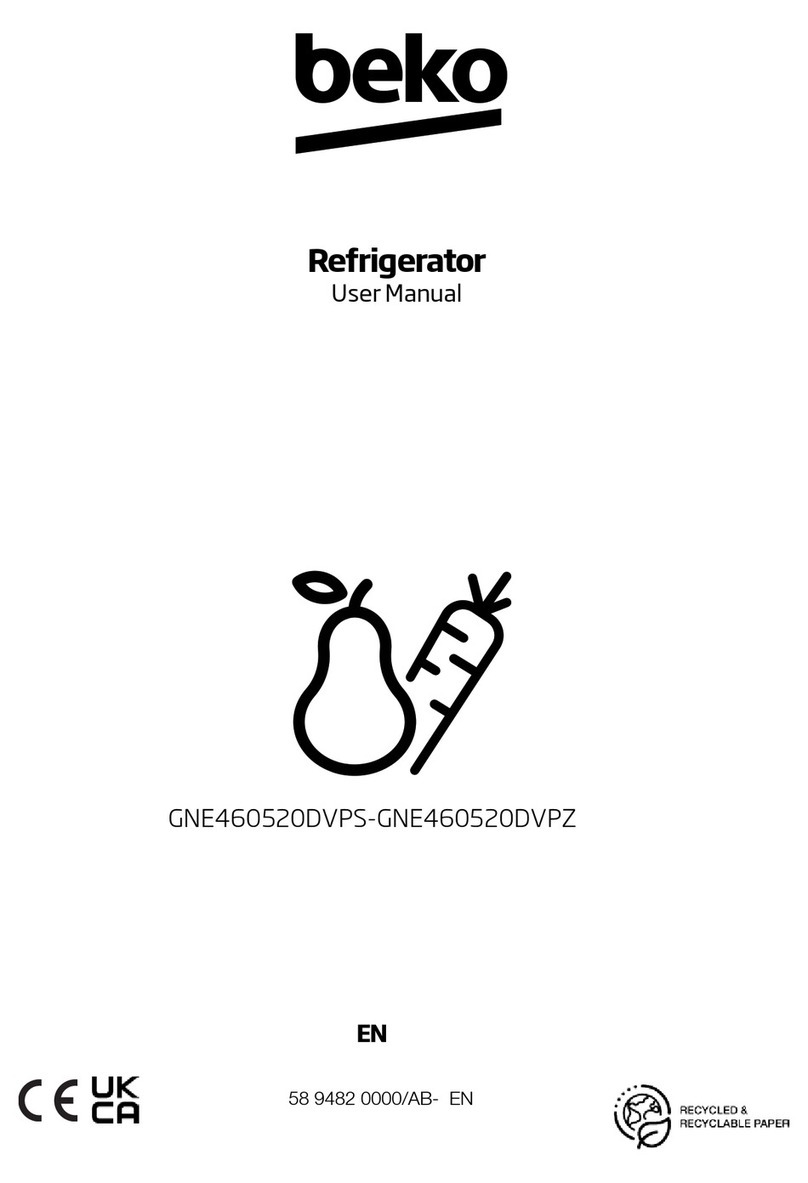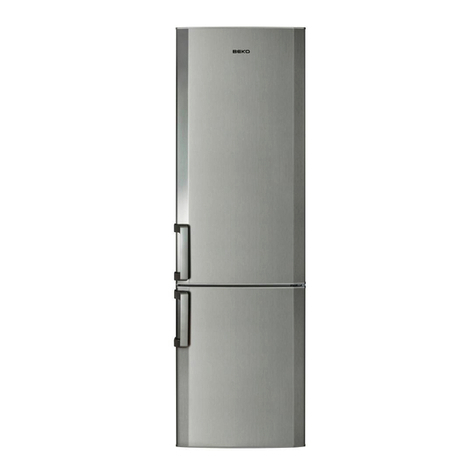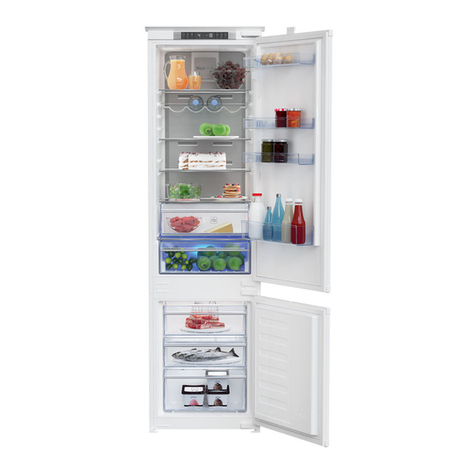
5 / 22 EN
Refrigerator/User Manual
Safety and environment instructions
the plug by holding the socket.
• Donotplugtherefrigeratorifthe
wall socket is loose.
• Neverconnectyourrefrigerator
to energy saving devices. Such
systems are harmful to your
product.
• Unplug the product during
installation, care, cleaning and
repairing procedures.
• Always have the Authorised
Service Provider install
the product and establish its
electrical connections. The
manufacturer cannot be held
responsiblefordamagescaused
by procedures performed by
unauthorised persons.
• Do not eat cone ice cream or
icecubesimmediatelyafteryou
take them out of the freezer
compartment! This may cause
frostbite in your mouth!
• Do not touch frozen food with
wet hands! They may stick to
your hand!
• Do not put bottled or canned
liquid beverages in the freezer
compartment. They may burst!
• Never use steam or steam
cleaners to clean or defrost the
refrigerator. Steam gets into
contactwiththelivepartsinyour
refrigerator,causingshortcircuit
or electric shock!
• Do not use mechanical devices
or other means to accelerate
the defrosting process other
than those recommended by
the manufacturer.
• Never use the parts in your
refrigerator such as the door
and drawer as a means of
support or step. This may
cause the product to tip over
or damage the parts of it.
• Do not damage the parts
where the refrigerant is
circulating with drilling or
cutting tools. The refrigerant
that might blow out when
the gas channels of the
evaporator, pipe extensions
or surface coatings are
punctured causes skin
irritations and eye injuries.
• Do not cover or block the
ventilation holes in your
refrigerator with any object.
• Place the beverage with
higher proofs tightly closed
and vertically.
• Do not use gaseous sprays
near the product since there is
the risk or fire or explosion!
• Flammable items or products
that contain flammable
gases (e.g. spray) as well as
explosive materials should
never be kept in the appliance.
• Do not place vessels filled
with liquid onto the product.
Splashing water on an
electrical part may cause
electric chock or the risk of
fire.
• Do not store items that
need precise temperature
